Vespa Scooters – Every Model, Every Year
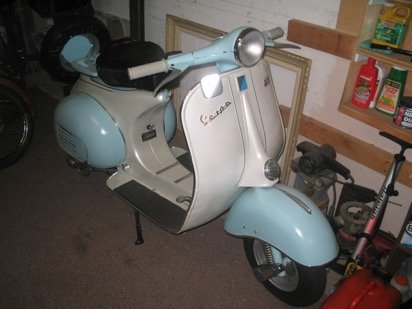
Tightening emission regulations and a toughening market were the forces that split Vespa’s history in North America into two separate eras. Vintage Vespa’s were entirely 2-stroke powered, so by 1985, Vespa’s scooters no longer met tightening emissions regulations and Vespa/Piaggio had no 4-stroke engine developed to bring in, so they closed up shop. Overly the nearly two decades of Vespa’s absence, quite a few Vespa’s were imported from various countries and with varying specifications. These “grey market” imports make the Vespa situation more confusing and additional research is likely required if you’re considering one.
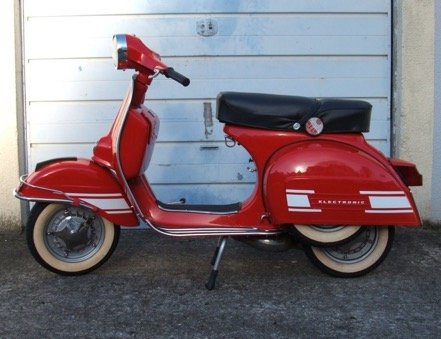
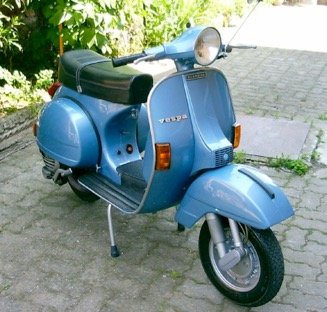
For 1978 a new generation of Vespa arrived, the P series. Vespa sold the powerful P200E (shown) and the P125X. These were the first Vespa’s with modern 12 volt electrical systems. They were very popular and fast. Unfortunately, by 1983 new emissions regulations made it difficult for Vespa to import larger 2-strokes. Accordingly, dealer stock dried up and the vast majority of dealerships closed shop. Vespa carried on overseas with their PX model, but it wasn’t until the late 90’s when they released their new generation of ET scooters that they began eyeing a return. The ET was designed with 4-stroke motors in mind, so it carried high hopes of a return to global prominence.
 2001 – 2002
2001 – 2002
This was the beginning of the modern era for Vespa in North America. In 2001 Vespa returned with their new ET series scooters (shown). The ET frame was designed to handle both 2-stroke and 4-stroke engines, which could range from 50-150cc’s. 2-stroke ET scooters were named ‘ET2’ and the 4-strokes were called ‘ET4’s.
In the USA, Vespa introduced the 50cc ET2 50 and the larger 4-stroke ET4 150. Both of these scooters shared the same steel frame but obviously differed in the engine choice. The 50cc ET2 was capable of a restricted 35mph, while the 150cc ET4 was capable of 60 mph.
MODELS: ET2 50 (USA only), ET4 150 (USA only)
2003
Vespa added a ‘large frame’ scooter to their North American lineup, the 200cc Grandturismo. This scooter is more commonly known as simply the GT 200 and is the first large frame Vespa of the modern era. It had been 20 years since Vespa offered a large frame in North America after the P200 was discontinued.
MODELS: ET2 50 (USA only), ET4 150 (USA only), GT 200 (USA only)
2004 – 2005
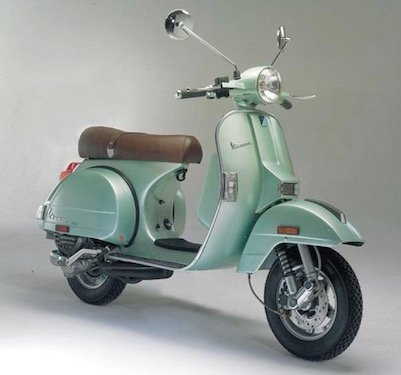
This model was introduced to satisfy vintage enthusiasts who weren’t happy with the modern looks and CVT transmissions of the ET series. These 1500 PX scooters were all 2004 models, despite that they took 3-4 years to sell out. Sales were slower than expected for Vespa, as Genuine Scooter Company began importing LML built PX scooters around the same time under the Stella badge. These Stella’s had lower prices and were a more technological advanced iteration of the PX design, which you can read about on the Stella page.
2004 was also the year Vespa returned to the Canadian market for the first time in over two decades. In the early years, Canadian Scooter Corp. (CSC) was the importer for Canada.
MODELS: ET2 50, ET4 150, GT 200, PX 150
 2006 – 2007
2006 – 2007
For 2006 Vespa replaced it’s ET series scooters with a new 4-stroke LX series (shown). The LX 50 was capable of 35-40 mph, while the larger LX 150 was capable of a claimed 59 mph. This new series marked the first time Vespa sold a 4-stroke 50cc scooter in the North American market. The LX models are not entirely new scooters, but they are a radical update on the initial ET series design. The LX 150 uses the same LEADER 4-stroke engine as the 150cc ET model, and the 50cc LX uses a 4-stroke engine used in the ET series in some overseas markets. With the LX, Vespa did a much nicer job with several of the design aspects such as the blinkers.
The largest Vespa yet, the Granturismo Sport 250 (GTS 250), was launched in fall 2005 as a 2006 model in Canada and the USA. This scooter replaced the GT 200. Vespa also celebrated their 60th anniversary by launching up scale versions of the LX (dubbed the LXV 150) and the GTS 250 (dubbed the GTV 250).
MODELS: LX 50, LX 150, LXV 150, GTS 250, GTV 250
 2008
2008
Based on the LX 150, Vespa launched the Vespa S with a different headlight, mirrors, seat, dash and trim (shown with optional graphics). Compared to the LX (shown in black), notice the chrome piece on the front, the chrome on the fender, the mirrors, headlight and seat.
MODELS: LX 50, LX 150, LXV 150, S 150, GTS 250, GTV 250
2009
Vespa added a 50cc version of the S. This scooter is mechanically identical to the LX 50, but it gets the same styling as the 150cc Vespa S. Vespa also revised their 50cc Hi-PER4 engine (found in the LX 50 and 50cc Vespa S) to have a new 4-valve head. Vespa hasn’t reported higher horsepower or milage figures but you would expect to gain a little in both of these categories with a more efficient 4-valve motor.
The other significant change to Vespa’s 2009 lineup is a 34cc boost to the GTS. With the bump to 278cc came an appropriate name change from the GTS 250 to the GTS 300 Super.
MODELS: LX 50 4V, LX 150, LXV 150, S 50, S 150, GTS 300 Super
2010
The biggest news for the 2010 model year was the announcement of electronic fuel injection for the 150cc LX / S / LXV models. Vespa added ‘i.e.’ to the names of these scooters and ditched the poorly designed kickstarter.
The other noteworthy change for 2010 was to the trim levels of the GTS. For 2010 Vespa offered the regular GTS 300 model and the GTS 300 Super which adds red coil springs, a sport seat, black rims and a passenger grab handle instead of the rear rack for a few hundred more. If you want to go all out there is the GTV 300 which gets you all the chrome and a nice leather seat and updated headset/headlight styling.
MODELS: LX 50 4V, LX 150 i.e., LXV 150 i.e., S 50, S 150 i.e., GTS 300 / GTS 300 Super / GTV 300
2011 – 2012
No significant changes for 2011 or 2012.
MODELS: LX 50 4V, LX 150 i.e., LXV 150 i.e., S 50, S 150 i.e., GTS 300 / GTS 300 Super / GTV 300
 2013
2013
Vespa didn’t go so far as to introduce the new 946 Quarantasei to North America or their new 3-valve 150cc engine, but they did make some nice updates for 2013.
First, the color offerings for all models got overhauled, with some new shades introduced and some old favourites returning. The LX and S also get some new touches including a Vespa logo on the floor mat and grips and some tweaks to the horn. The S also gets a new matte black enclosure for the gauges that should make things easier to clean. The larger LX also receives style tweaks to the gauge cluster.
The biggest news for the new year is the new Sport SE variants of the S and GTS. These satin black only limited edition variants boast a sporty seat with white piping, red shock accents and additional graphics on the rear flanks for a distinctive look. At just $100 more than the regular models, the Sport SE models offer good value.
MODELS: LX 50 / 150, LXV 150, S 50 / 150 / 150 Sport SE , GTS 300 / GTS 300 Super / GTS 300 Super SE / GTV 300
 2014
2014
The huge news for 2014 is the radically new and ambitious Vespa 946 is scheduled to land in the USA and Canada in the fall. Vespa is saying November, 2013 for North America with an MSRP of $9946. This revolutionary scooter from Vespa packs fresh styling and ambitious technology including ABS, traction control, fuel injection and front and rear disc brakes.
While the price point is subject for debate, you have to hand it Vespa for their initiative in bringing a scooter this ambitious to market and at a price point no one has ever tested for a small (150cc) scooter. The 946 introduces so many new design elements including digital LCD gauges, LED headlamp, partial aluminum construction and much hand assembly and stitching. Initially the 946 is available in either black or white, with quite a few nice options. One practical add on is a rear rack and matching luggage bag (shown in red). This accessory fits well with the 946’s style and adds much desired storage capacity.
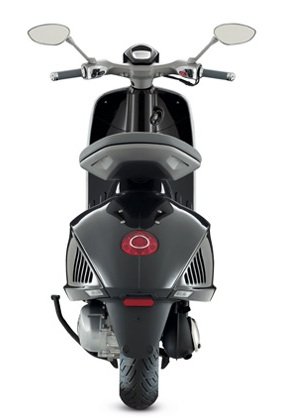
With the rest of their line, Vespa opted not offer the same models in both the USA and Canada for the first time since Vespa started selling scooters in Canada. Both countries continue to receive the same core designs (LX, S and GTS plus the 946), but Vespa has chosen not to offer their 150cc models in Canada (LX150 IE, LXV 150 IE, S 150 IE, S 150 Sport SE), which may be a short term situation as they await the new generation of Primavera. Additionally, Vespa is no longer importing the Sport SE edition of the S 50 to Canada, leaving just the regular S 50 on sale there.
USA MODELS: 946, LX 50 / 150, LXV 150, S 50 / 150 / 150 Sport SE, GTS 300 / 300 Super / 300 Super Sport SE / GTV 300, CANADA MODELS: 946, LX 50, S 50, GTS 300 / 300 Super / 300 Super Sport SE / GTV 300
 2015
2015
2014 had barely started when Vespa announced their first 2015 model: the Primavera (below right). The 946 inspired Primavera headed to North America (Canada & USA) as Vespa’s next generation small frame. North American’s were offered both 50cc 4-valve 4-stroke and 155cc 3-valve fuel injected 4-stroke forms starting April 2014.
Also new as a 2015 model is the Vespa Sprint (above left), which is a Primavera based successor to the Vespa S. The new Sprint is a sportier take on the Primavera platform, much like the S was for the LX platform. Compared to the Primavera, the Sprint uses an edgier trapezoidal headlight, larger and restyled 12” rims and a restyled instrument cluster and grab rail. ABS is also standard on larger Sprint 155cc models in North America, unlike the Primavera. The Sprint 50 lists for $3699 (USA) or $3995 (Canada), which is a $100 premium over the Primavera, while the Sprint 155 comes at a $300 premium ($5199 USA, $5395 Canada) because of the ABS.
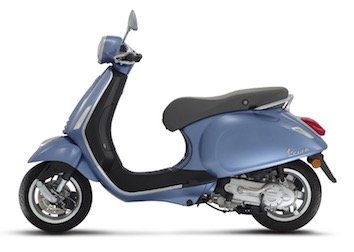
In the USA the GTS was also substantially updated for 2015 with ABS, traction control, redesigned front suspension and a smartphone integration system. The smartphone integration system (called VMP or Vespa Multimedia Platform) is really neat as it allows for all sorts of information to be displayed on your phone including speed, RPM, horsepower, torque and fuel milage. Pricing for 2015 is $6599 for the GTS 300 or GTS 300 Super, or $6799 for the GTS 300 Supersport. Full details including color options are on the GTS page.
USA MODELS: Primavera 50 / 150, Sprint 50 / 150, 946, GTS 300 / 300 Super / 300 Super Sport SE / GTV 300, CANADA MODELS: Primavera 50 / 150, Sprint 50 / 150, 946, GTS 300 / 300 Super / 300 Super Sport SE / GTV 300
 2016
2016
Vespa USA made significant updates across their lineup for 2016. The first changes came in summer 2015 when Vespa added ABS, ASR (traction control) and smart phone integration to the GTV 300 with an early release of 2016 models in both the Canada and USA. These updates were added to the GTS for the 2015 model year, but Vespa went a step further with the GTV and also redid the saddle, chromed the rims and revised the taillight frame and front rack.
In fall 2015 Vespa released the third version of the 946 – the Emporio Armani edition called the 946 EA. This time around the 946 is only offered in one color: dark dark grey/green with black accents and rims. It’s a nice looking color scheme and the dark rear rack matches nicely. As usual, pricing is around $10g for the 946 and it’s only available at a few Vespa stores in big markets.
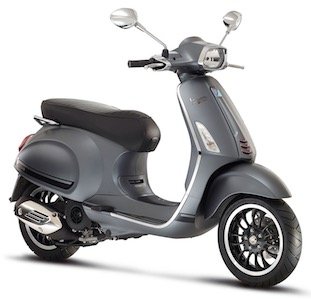
The Primavera Tourer is a similar idea as the old LXV (besides the fender mounted headlight) in that it adds a number of leather and touring accessories to create a loaded model. The Primavera Tourer gains a windscreen, ribbed brown leather seat and front and rear luggage racks. The only color for the Tourer is “Grigio Seta” (pale grey). Pricing is $5399, which is +$400 over the regular Primavera.
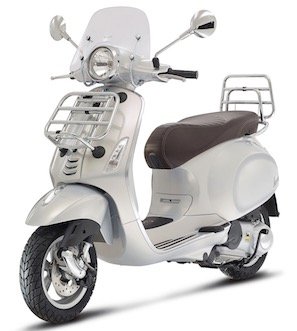
In Canada, Vespa is skipping the 2016 model year for the Sprint 150. Hopefully it’ll return for 2017 when inventory is cleared out (Update: Indeed it did).
USA MODELS: Primavera 50 / 150 / 150 Touring / Settantesimo, Sprint 50 / 150 / S 150, 946, GTS 300 / 300 Super / 300 Super Sport SE / GTV 300 / Settantesimo, CANADA MODELS: Primavera 50 / 150 / Settantesimo, Sprint 50 / 150, 946, GTS 300 / 300 Super / 300 Super Sport SE / GTV 300 / Settantesimo
2017
Vespa carried over their USA and Canadian lineups largely unchanged for 2017.
The only changes are a new “red” version of the 946 and then end of the limited edition “Settantesimo” models. Like 2016, only the USA market gets the fancier “Tourer” and “S” versions of the Primavera and Sprint.
USA MODELS: Primavera 50 / 150 / 150 Touring, Sprint 50 / 150 / S 150, 946, GTS 300 / 300 Super / 300 Super Sport SE / GTV 300, CANADA MODELS: Primavera 50 / 150, Sprint 50 / 150, 946, GTS 300 / 300 Super / 300 Super Sport SE / GTV 300
 2018
2018
Vespa’s lineup got more colorful for 2018 as they mixed up their color offerings and added quite a few unique and often eye popping shades. The Sprint is now available in new lime green and orange colors, plus a new yellow for the Sprint S alongside the more traditional color offerings. The Primavera gains pale blue and coral rose, while the Primavera Tourer (USA only) arrives in a matte olive green. The various GTS models gain similar new colors as well, including pale blue, yellow, “elegant beige”, lime green, and a rather nice deep red.
Lastly, Vespa has released yet another version of the GTS/GTV platform – this time a special edition of the GTV called the Sei Giorni which features a matte olive green paint job with a painted race number to commemorates Vespa’s 1951 racing success.
It doesn’t look like any ultra pricey 946 models are headed to North America this year.
USA MODELS: Primavera 50 / 150 / 150 Touring, Sprint 50 / 150 / S 150, GTS 300 / 300 Super / 300 Super Sport / GTV 300 / GTV 300 Sei Giorni, CANADA MODELS: Primavera 50 / 150, Sprint 50 / 150, GTS 300 / 300 Super / 300 Super Sport / GTV 300 / GTV 300 Sei Giorni
2019
Vespa added a number of special editions to their line for 2019. They hadn’t previously offered the “S” variant of the Sprint 50 nor the Primavera, but for 2019 added just that with the Sprint 50 S coming to the USA and Canada, while the Primavera S 150 (no 50cc option) comes to the USA only.
Additionally, Vespa added three new versions: Notte, 50th Anniversary and Yacht Club. The Notte uses blacked out trim and is available on the Sprint 50 and 150, as well as the GTS Super 300. The Yacht Club model also tweaks the graphic and trim, while most obviously features sailing inspired two tone coloring (blue and white) with similar colors on the saddle. The Yacht Club version is available on the Primavera 50 / 150 and GTS.
Also new for 2019 are “50th Anniversary” versions of the Primavera 50 and 150. The 50th Anniversary model comes in two new colors (light blue and brown) with grey rims and an anniversary logo and other tweaks to the graphics and trim.
Vespa also trimmed their abundance of variants on the GTS platform with the Super Sport and regular GTV being discontinued while the GTS 300 (USA only), GTS Super 300, and GTV Sei Giorni remain.
MODELS: Primavera 50 / 150, Sprint 50 / 150, GTS Super 300 / GTV 300 Sei Giorni
 2020
2020
Vespa announced their first electric scooter – the Elettrica – in 2019 as an early release 2020 model.
MODELS TO DATE: Elettrica

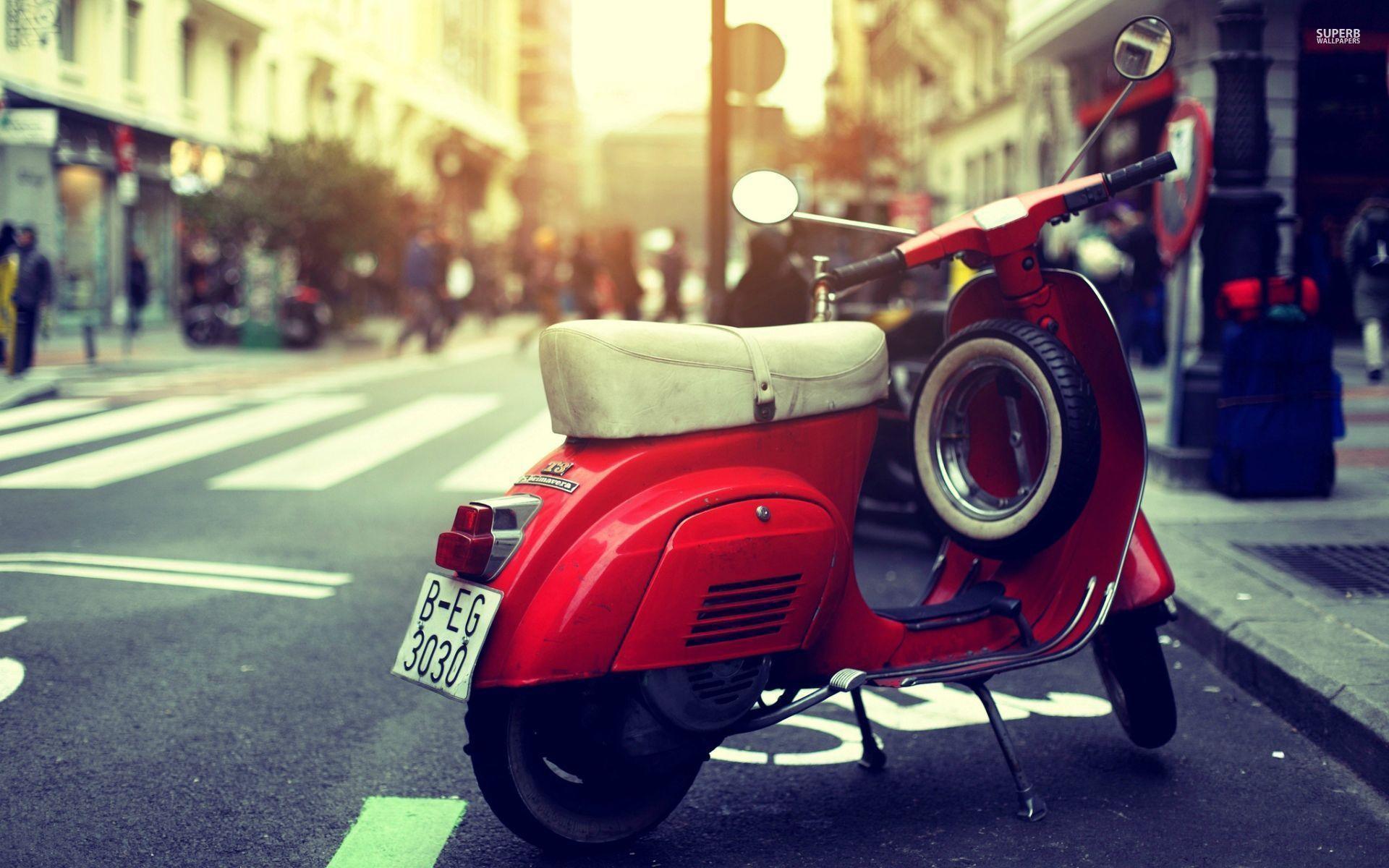
 2001 – 2002
2001 – 2002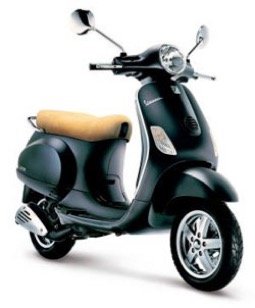 2006 – 2007
2006 – 2007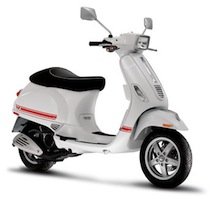 2008
2008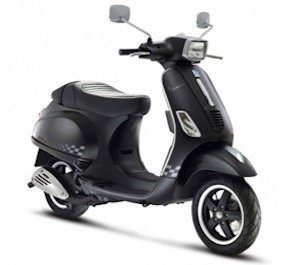 2013
2013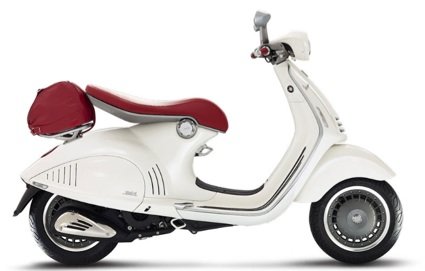 2014
2014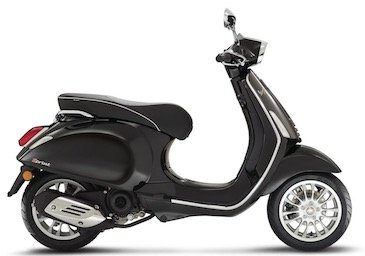 2015
2015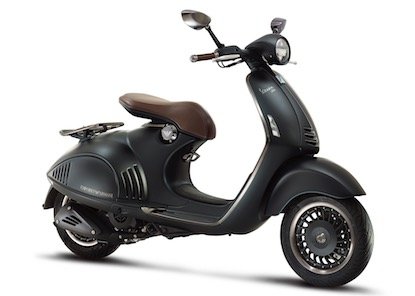 2016
2016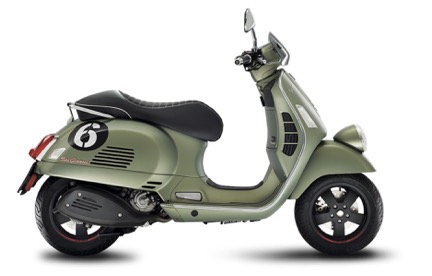 2018
2018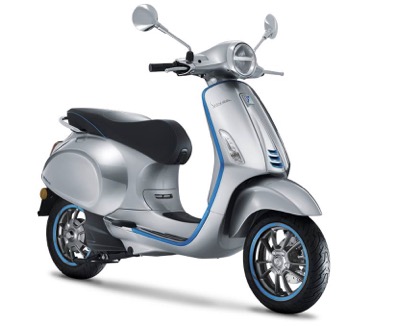 2020
2020